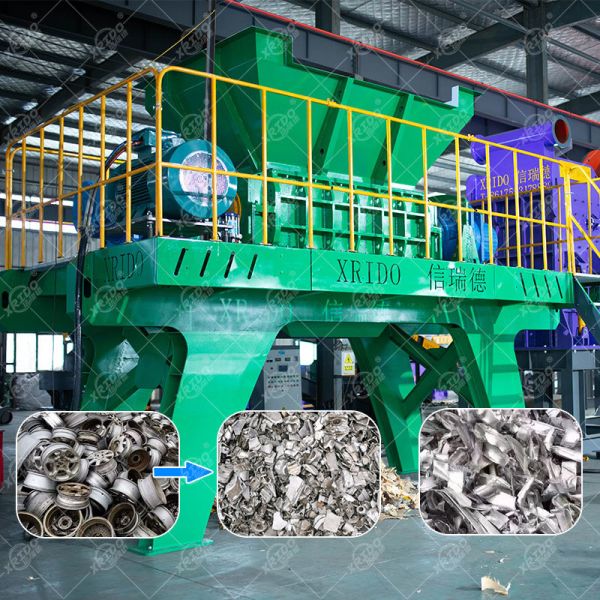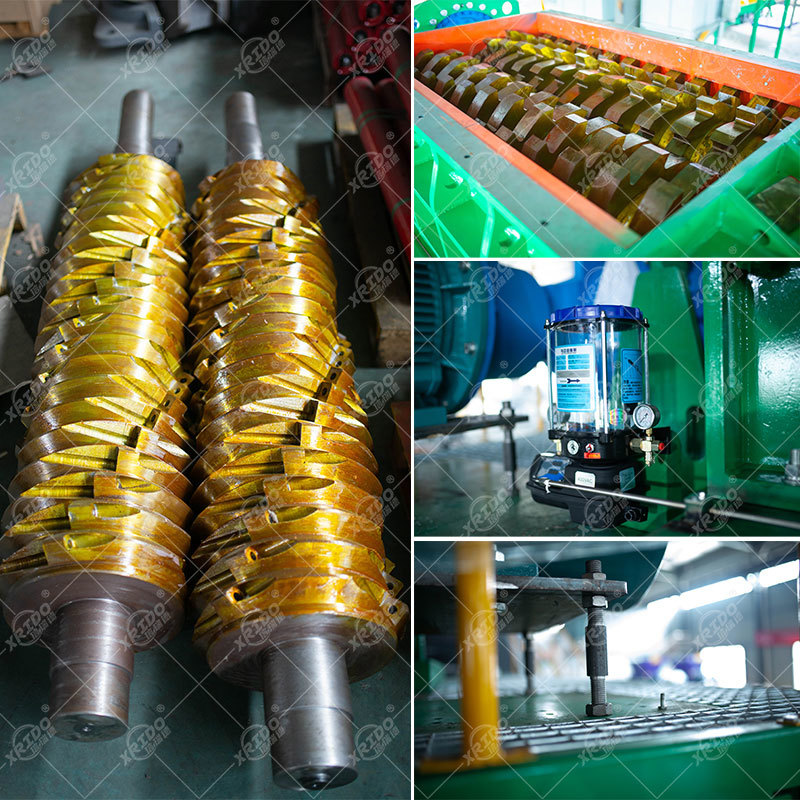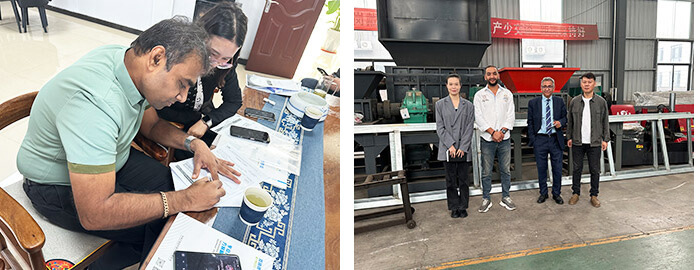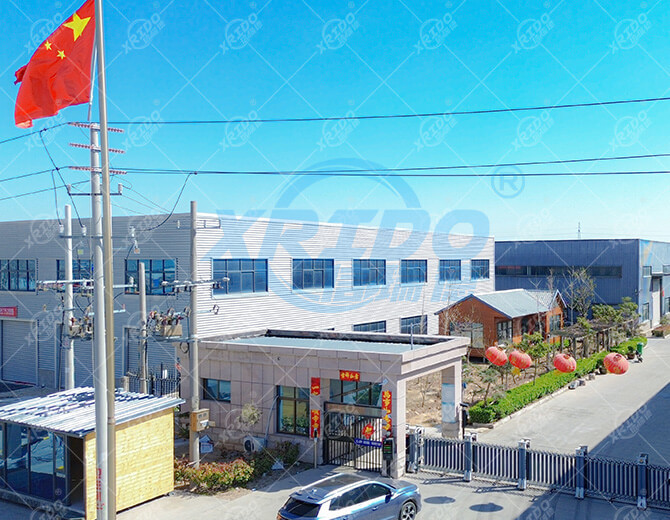| Sign In | Join Free | My frbiz.com |
|
| Sign In | Join Free | My frbiz.com |
|
| Categories | Aluminum Shredder |
|---|---|
| Brand Name: | Xrido |
| Model Number: | 2000 |
| Certification: | CE ISO TUV |
| Payment Terms: | Negotiable |
| Delivery Time: | 2-30 Working Days |
| place of origin: | Henan, China |
| video outgoing-inspection: | Provided |
| machinery test report: | Provided |
| core components: | PLC, Engine, Bearing, motor |
| warranty: | 1 Year |
| material / metal processed: | Stainless Steel, Brass / Copper, Alloy, Carbon Steel, Aluminum |
| key selling points: | Automatic |
| Name: | Waste Metal Crushing |
| Keyword: | Double Shaft Scrap Metal Recycling |
| Final product: | 1-10 Cm |
| Color: | Customized Color |
| Advantage: | High Efficiency Low Energy Consumption |
| Capacity: | 300-22000 Kg/hour |
| Type: | Environment-friendly |
| Material Processed: | PE Film PP Woven Bags |
| Lifetime: | 5~10 Years |
| Condition: | New |
| Warranty of core components: | 1 Year |
| Applicable Industries: | Garment Shops, Building Material Shops |
| Company Info. |
| Henan Xrido Environmetal Protection Technology Co., Ltd. |
| Verified Supplier |
| View Contact Details |
| Product List |
Aluminum Can Shredder For Sale Aluminum Can Shredder Aluminum Can Shredder Recycling Plant
A waste aluminum can shredder is a mechanical device specifically designed for processing waste aluminum cans. It uses powerful mechanical force to break regular or irregularly shaped waste aluminum cans into small pieces or flakes for subsequent recycling, reprocessing, and reuse. This equipment plays a vital role in aluminum resource recycling, effectively improving the efficiency and quality of waste aluminum can processing.

Working Principle
1. Power Transmission: The motor provides power, which is
transmitted to the shredder's main shaft through a transmission
device such as a pulley, coupling, or reducer, causing the main
shaft to rotate steadily at a set speed and direction. Typically,
dual or quad motors are used to ensure sufficient power to process
waste aluminum cans.
2. Material Input: Waste aluminum cans are fed into the shredder's
shredding chamber through a feed system (such as a hopper or
conveyor). The feed system controls the feed speed and volume to
ensure uniform delivery of the cans.
3. Shredding Process: Within the shredding chamber, special cutting
tools (such as high-hardness alloy blades and claws) are mounted on
the main shaft. As the spindle rotates, the cutting tools apply
shearing, squeezing, and tearing forces to the discarded aluminum
cans. The shearing action of the cutting tools severs the
connecting parts of the can body and lid, and then uses squeezing
and tearing forces to break the cans into small pieces.
4. Discharge: The crushed aluminum can fragments are discharged
through the discharge port. The size of the fragments can be
controlled by adjusting parameters such as the cutter spacing and
spindle speed to meet subsequent processing requirements.

Applicable Materials
1. Common beverage aluminum cans: Such as cola cans, Sprite cans, and beer cans. These cans are generally made of aluminum alloy and are the primary target for the waste aluminum can shredder.
2. Food cans: Aluminum cans used to hold food are also suitable for shredding due to their material and structural characteristics.
3. Other aluminum containers: Small aluminum cosmetic cans, pharmaceutical cans, etc. can also be shredded by the waste aluminum can shredder.

Advantages
1. Efficient Crushing: It can quickly crush large quantities of
discarded aluminum cans into small pieces, improving processing
efficiency and saving time and labor costs.
2. Excellent Crushing Effect: It can break aluminum cans into
uniform small pieces, facilitating subsequent smelting,
reprocessing, and other processes, thereby increasing aluminum
recycling rates.
3. High Adaptability: It can process discarded aluminum cans of
various sizes, shapes, and materials, such as cola cans and beer
cans, and can also accommodate certain degrees of deformation and
accumulation.
4. Good Stability: The equipment's rational structural design, use
of high-quality materials, and advanced manufacturing processes
ensures it can withstand heavy workloads, operate stably and
reliably, and reduce the risk of failure. 5. Environmental
Protection and Energy Saving: Some equipment is equipped with dust
removal devices to reduce dust pollution during the shredding
process. Furthermore, the power system is optimized to reduce
energy consumption, meeting environmental and energy conservation
requirements.
Product Specifications:
| Model | Overall Size(mm) | Crushing Cavity Size(mm) | Power(kw) | Weight(kg) |
| XRD - SZSS - 500 | 2800×1300×1850 | 500×480 | 11×2 | 2200 |
| XRD - SZSS - 800 | 3000×1300×1850 | 800×480 | 15×2 | 2500 |
| XRD - SZSS - 1000 | 3300×1900×2200 | 1000×690 | 22×2 | 5200 |
| XRD - SZSS - 1200 | 3600×2000×2200 | 1200×690 | 30×2 | 6400 |
| XRD - SZSS - 1500 | 4100×2100×2400 | 1500×850 | 55×2 | 9000 |
| XRD - SZSS - 1800 | 5800×2400×3300 | 1800×1206 | 75×2 | 13600 |
| XRD - SZSS - 2000 | 6400×2700×3500 | 2000×1490 | 90×2 | 20100 |
| XRD - SZSS - 2500 | 7500×3200×3800 | 2500×1800 | 110×2 | 22500 |
| XRD - SZSS - 3000 | 8600×3500×4000 | 3000×1800 | 160×2 | 31000 |
(Special - customized types can be customized according to the size and type of materials.)
Scrap Auminum Cans Shredding and Sorting Line
1. Collection and Conveying: Scattered waste aluminum cans are
collected and transported to the shredder's feed inlet via a
conveyor (such as a belt conveyor or screw conveyor). 2.
Pretreatment: Before feeding, aluminum cans can undergo simple
pretreatment, such as removing surface attachments like plastic
labels and pull tabs. However, some shredders can also remove these
attachments during the shredding process.
3. Crushing: The shredder is started, and the pretreated aluminum
cans are fed through the feed inlet into the shredding chamber. The
cutting tools on the main shaft shred the cans, cutting them into
small pieces.
4. Discharge and Collection: The shredded aluminum can fragments
are discharged from the discharge port and transported by conveying
equipment to a collection container for further processing, such as
melting or further processing.


|
|
Case:
|  |
Customer Visit:


Our Team:




|